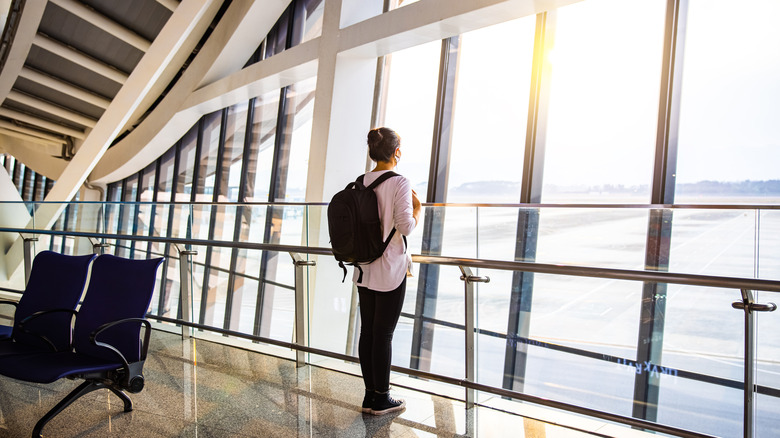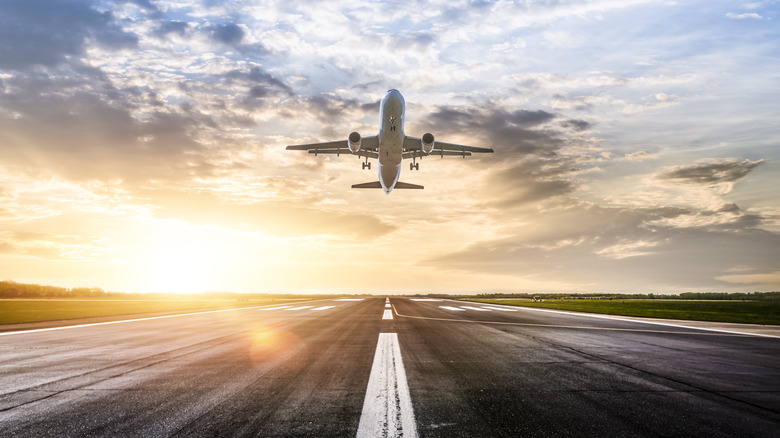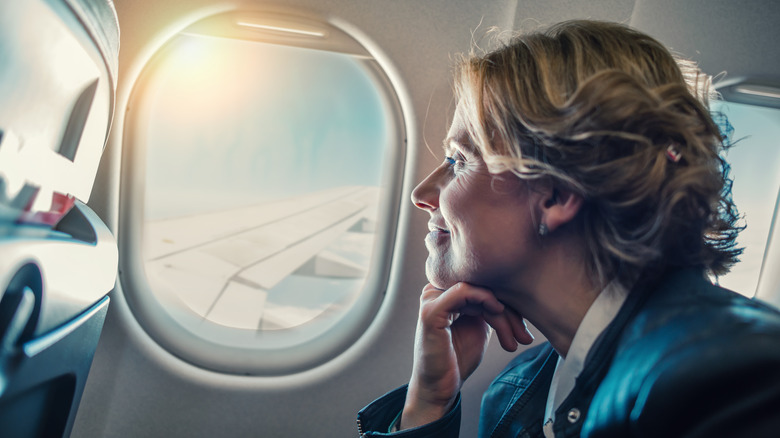If You're Worried About Turbulence, Book A Flight At This Time Of Day
A bumpy ride during a long road trip is cumbersome and headache-inducing at its worst, but a bumpy plane ride? It can have you fearing for your life no matter the intensity. Experiencing turbulences is, unfortunately, part of flying. However, even if you're well-accustomed to traveling via planes, it can be hard to get used to the shaky movement an aircraft does mid-flight.
Turbulence occurs when "there's a disruption in that balance," FOX Weather meteorologist Jason Frazer explained, noting that when there's a significant discrepancy in wind speed and direction, the aircraft quivers as a result. The good news, though, is there is nothing to worry about. Turbulence happens on nearly every flight, and you shouldn't agonize too much over your safety when it happens. Pilots don't get worked up about it, and neither should passengers. "You're virtually guaranteed to be safe," Paul Williams, a professor of atmospheric science at the University of Reading, told NPR. If injuries do occur due to turbulence, only a small number of people sustain serious harm out of the millions that fly each year. Data from the Federal Aviation Administration noted that between 2009 and 2022, 34 passengers and 129 crew members had been seriously injured due to turbulence, and it mostly happened because they weren't wearing seatbelts.
Given the commonality of turbulences, it may be unrealistic to expect a smooth-sailing flight every time. If you really want to lower your chances of experiencing them, it's best to book early morning flights.
Book morning flights for a smoother ride
It may not be ideal to wake up at the crack of dawn to catch an early morning flight, but it's apparently your best bet if you want smoother skies. Justin Franco, a former spokesperson for American Airlines, shared with The Points Guy that convective turbulences, the kind that is caused by inclement weather, don't usually happen in the mornings. They typically occur in the afternoons instead. "In fact, most incidents of severe air turbulence happen during storms or other severe weather events," he said.
Morgan Smith, a Boeing 737 pilot, confirmed this, telling The New York Times that early morning flights are indeed great for fliers concerned about turbulence. Apart from storms, the heat rising from the ground also evidently increases the likelihood of a bumpy flight. Smith noted that this happening is minimized.
And besides, airports are notably less busy in the early morning. Don't you want a smoother check-in process, too?
Try reserving seats near the wings too
If you can't hack an early morning flight, you can just be strategic about where you'll sit in the plane. As it turns out, the part of the plane that is least affected by turbulences is near the wings. Airline pilot and travel blogger Patrick Smith noted on his Ask the Pilot blog that this is because the wings area is closest to the aircraft's center of gravity. You'll still feel the turbulence. However, it may not be as intense when situated near a plane's wings.
The size of the plane is a factor as well. The bigger the plane is, the more it can handle changes in wind speed. Because it weighs more and is significantly larger in terms of volume, the passengers inside will experience a much smoother flight. Not all planes you'll ride will be massive, of course, but if you want to be sure, you can always double-check the plane type before booking. You may encounter fewer larger planes on domestic flights, but for international ones, planes like the Airbus A380 can supposedly hold its own against bumpy skies.
If all else fails, the best thing you can do is relax. Turn your headphones on, buckle up, and breathe in and out. Everything will be fine.


